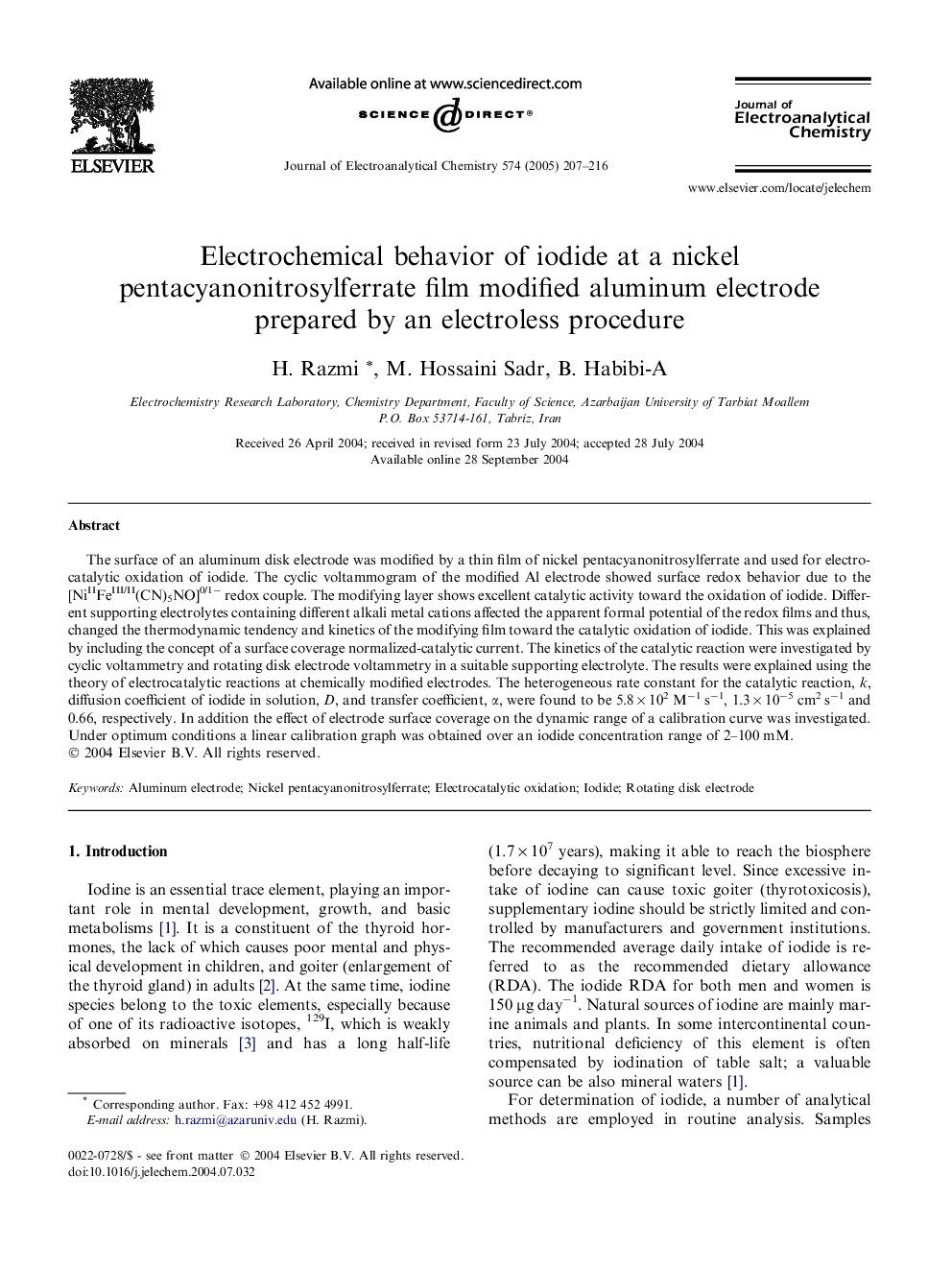| Article ID | Journal | Published Year | Pages | File Type |
|---|---|---|---|---|
| 10276038 | Journal of Electroanalytical Chemistry | 2005 | 10 Pages |
Abstract
The surface of an aluminum disk electrode was modified by a thin film of nickel pentacyanonitrosylferrate and used for electrocatalytic oxidation of iodide. The cyclic voltammogram of the modified Al electrode showed surface redox behavior due to the [NiIIFeIII/II(CN)5NO]0/1â redox couple. The modifying layer shows excellent catalytic activity toward the oxidation of iodide. Different supporting electrolytes containing different alkali metal cations affected the apparent formal potential of the redox films and thus, changed the thermodynamic tendency and kinetics of the modifying film toward the catalytic oxidation of iodide. This was explained by including the concept of a surface coverage normalized-catalytic current. The kinetics of the catalytic reaction were investigated by cyclic voltammetry and rotating disk electrode voltammetry in a suitable supporting electrolyte. The results were explained using the theory of electrocatalytic reactions at chemically modified electrodes. The heterogeneous rate constant for the catalytic reaction, k, diffusion coefficient of iodide in solution, D, and transfer coefficient, α, were found to be 5.8 Ã 102 Mâ1 sâ1, 1.3 Ã 10â5 cm2 sâ1 and 0.66, respectively. In addition the effect of electrode surface coverage on the dynamic range of a calibration curve was investigated. Under optimum conditions a linear calibration graph was obtained over an iodide concentration range of 2-100 mM.
Keywords
Related Topics
Physical Sciences and Engineering
Chemical Engineering
Chemical Engineering (General)
Authors
H. Razmi, M. Hossaini Sadr, B. Habibi-A,
